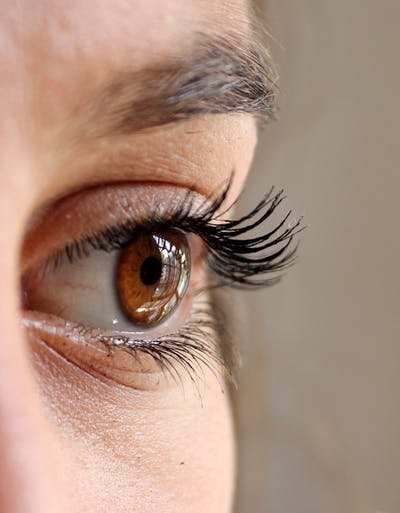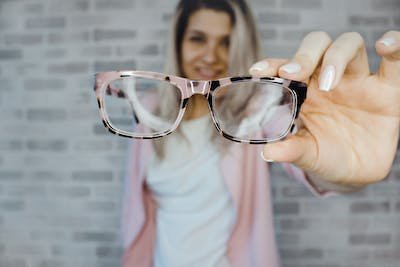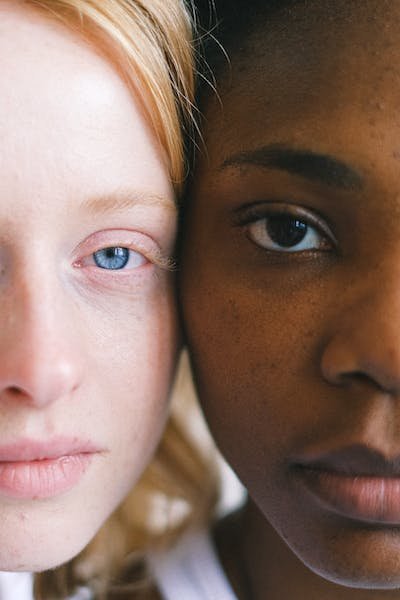What Is The Difference Between Short-Sightedness and Long-Sightedness?
When you look at the world, what you’re really seeing is a combination of your eyes and the optical system in front of them. Your eyes have lenses that change the light coming in from the outside world into clear images that you can see. Your optical system has a scope that changes images from front to back and side to side, making it easy for you to see things from different distances. If your visual system is short-sighted, then it means there’s not enough space between your eyes to let in enough light to see clearly.
You have a very limited field of view (FOV) and tend to have glasses wherever there’s natural light; reading, watching TV and movies or playing video games are out of the question. If your visual system is long-sighted, then it means there’s too much space between your eyes for adequate light intake. You tend to suffer from eye strain and headaches whenever there’s lots of natural light. Wearing sunglasses outdoors or using reading glasses indoors are fairly common.
What Is Short-Sightedness?
Short-sightedness is a visual disorder in which the eyes are unable to focus well on near objects. Most people with short-sightedness need reading glasses as adults.
Short-sightedness is caused by an anatomical difference between the eyes and the optical system in front of them. According to optical refraction, the human eye is a binocular optical system with a convex lens placed at the focus point between the two eyes.
The optical system can adjust focus either by changing the curvature of the lens or by moving the lens forward or backward. If a person is short-sighted, then there’s not enough space between their eyes for adequate light intake.

You have a very limited field of view (FOV) and tend to have glasses wherever there’s natural light; reading, watching TV and movies or playing video games are out of the question. If your visual system is long-sighted, then it means there’s too much space between your eyes for adequate light intake.
You tend to suffer from eye strain and headaches whenever there’s lots of natural light; wearing sunglasses outdoors or using reading glasses indoors are fairly common.
What Is Long-Sightedness?
Long-sightedness is a visual disorder in which the eyes are unable to focus well on distant objects. People with long-sightedness have a very wide FOV, which makes it hard to see things clearly from a distance.
You might also have to wear glasses to see clearly up close. Long-sightedness is caused by an anatomical difference between the eyes and the optical system in front of them. If a person is long-sighted, then there’s too much space between their eyes for adequate light intake.
You tend to suffer from eye strain and headaches whenever there’s lots of natural light; wearing sunglasses outdoors or using reading glasses indoors are fairly common. If your visual system is short-sighted, then it means there’s not enough space between your eyes to let in enough light to see clearly.
You have a very limited field of view (FOV) and tend to have glasses wherever there’s natural light; reading, watching TV and movies or playing video games are out of the question.
Difference Between Short-sightedness and Long-Sightedness
Short-sightedness and long-sightedness are very similar conditions, with the difference that one is caused by the eyes and one by the optical system in front of the eyes.
However, they can be treated almost the same way. In both cases, glasses are used to correct the problem and bring the visual system into a normal state.
In short-sightedness, the eyes are too close together, and there’s not enough space between them for adequate light intake. In long-sightedness, the eyes are too far apart, and there’s too much space between them for normal vision.

Can You Be Both Short-Sighted and Long-Sighted?
Yes, it’s possible to be both short-sighted and long-sighted. If you have short-sightedness but also a long-sighted condition (such as astigmatism or myopia), you need to wear glasses that correct both eyes.
Symptoms of Short-Sightedness and Long-Sightedness
Short-sightedness produces the following symptoms: - The FOV is too small, so you have to wear glasses to see clearly up close. - The FOV is too wide, so you can’t see things clearly from a distance.
Long-sightedness produces the following symptoms: - The FOV is too small, so you need to wear glasses to see clearly up close. - The FOV is too wide, so you can’t see things clearly from a distance.
Treatment of Short Sightedness and Long Sightedness
For short-sightedness, you have to wear glasses with a curved lens to correct your eyes’ imperfections. You can also have laser eye surgery or refractive lens implant surgery. Long-sightedness can be treated with glasses with a dioptric power between +1.00 and -1.00 D.

If you have serious eye problems such as myopia, astigmatism, or glaucoma, your doctor may recommend surgery to reshape your cornea.
This procedure is performed in an eye hospital under general anesthesia. Some people report that they get headaches while they are sleeping or reading while wearing glasses, which is a sign that the glasses are too strong. For this, you can try wearing less powerful glasses.
Conclusion
Short-sightedness is caused by an anatomical difference between the eyes and the optical system in front of them. If a person is short-sighted, then there’s not enough space between their eyes for adequate light intake. You have a very limited field of view (FOV) and tend to have glasses wherever there’s natural light; reading, watching TV and movies or playing video games are out of the question.
If your visual system is long-sighted, then it means there’s too much space between your eyes for normal vision. You tend to suffer from eye strain and headaches whenever there’s lots of natural light; wearing sunglasses outdoors or using reading glasses indoors are fairly common.
Long-sightedness is caused by an anatomical difference between the eyes and the optical system in front of them. If a person is long-sighted, then there’s too much space between their eyes for normal vision. You tend to suffer from eye strain and headaches whenever there’s lots of natural light; wearing sunglasses outdoors or using reading glasses indoors are fairly common.
• Links Consulted
(1). https://www.ojaseyehospital.com/blog/long-sightedness-and-short-sightedness/
(3). https://www.eyesolutions.in/blog/long-sightedness-and-short-sightedness/
(4). https://www.differencebetween.com/difference-between-long-sighted-and-vs-short-sighted/amp/
Así como lo explica en su artículo, la visión ideal es aquella que no presenta ningún problema cuando deseamos observar lo que hay frente a nosotros... Yo, nací con catarata congénita bilateral, ambos cristalinos dañados y en el ojo izquiedo no se formó el iris. Según los médicos, estaba ciega. Fuí sometida a tres operaciones (4 meses de edad, antes del año y a los seis años de edad). Así comencé mi época escolar, casi no podía ver; no me acostumbre a usar bastón, por eso me caía pero me levantaba de inmediato... El médico no ha querido volver a realizarme otra intervención quirúrgica, solo con un láser limpió nuevamente las cataratas que han reincidido...
Acá estoy, con limitaciones, pero aún así, me he enfrentado a la vida: egresé de la universidad y trabajo en una escuela pública... Pero casi no puedo ver el mundo con la perspectiva normal.
Gracias @royalevidence por la publicación de éste artículo que me ha explicado situaciones que antes no comprendía. Saludos!
As you explain in your article, the ideal vision is that which does not present any problem when we wish to observe what is in front of us.... I was born with bilateral congenital cataract, both crystalline lenses were damaged and the iris was not formed in the left eye. According to the doctors, I was blind. I underwent three operations (4 months old, before the age of one year and at the age of six). That's how I started my school years, I could hardly see; I didn't get used to using a cane, that's why I fell down but got up immediately.... The doctor did not want to perform another surgery on me, only with a laser he cleaned the cataracts again, which have recurred....
Here I am, with limitations, but even so, I have faced life: I graduated from university and I work in a public school.... But I can hardly see the world with the normal perspective.
Thank you @royalevidence for publishing this article that has explained situations I didn't understand before. Cheers!
Wow. I really appreciate this long and well explained comment
Thanks for your contribution to the STEMsocial community. Feel free to join us on discord to get to know the rest of us!
Please consider delegating to the @stemsocial account (85% of the curation rewards are returned).
Thanks for including @stemsocial as a beneficiary, which gives you stronger support.
Thank you